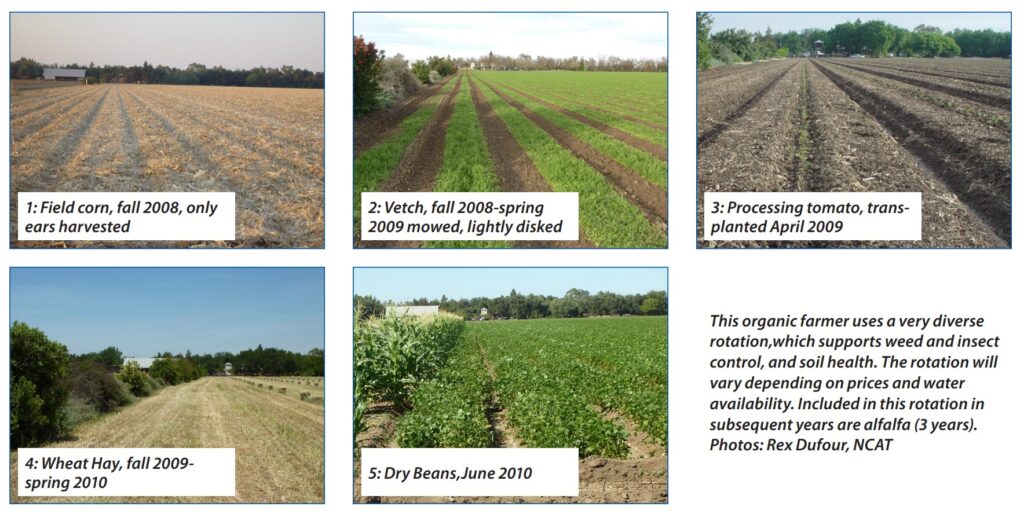What is Crop Rotation?
Crop rotation is a fundamental agricultural practice where different crops are planted sequentially on the same piece of land over different growing seasons. This method is crucial in organic farming systems for maintaining soil health, managing pests and diseases, and enhancing crop yields.
Benefits of Crop Rotation:
- Soil Health: Different plants release unique root exudates, fostering a diverse soil microbial environment, which enhances soil structure and fertility. For example, legumes like alfalfa and clover fix nitrogen, enriching the soil for future crops.
- Pest and Disease Management: Rotating crops disrupts the life cycles of pests and diseases that target specific plants, reducing their prevalence without relying on chemical pesticides.
- Weed Control: Varied crop types can outcompete weeds differently, reducing their spread and impact.
- Nutrient Management: Crops with different nutrient demands and residues balance soil nutrient levels, minimizing the need for synthetic fertilizers.
Principles of Effective Crop Rotation:
- Alternate legume crops with high-nitrogen-demanding crops.
- Grow annual crops for one year before rotating to another field.
- Avoid planting closely related species consecutively to prevent disease buildup.
- Incorporate deep-rooted crops to enhance soil structure and nutrient availability.
- Plan rotations that include cover crops to improve soil health and provide ground cover.
Implementation: Successful crop rotation requires meticulous planning, taking into account the farm’s production system, equipment, labor, and market demands. This includes developing a bed preparation plan and considering row spacing to optimize future rotations and reduce labor.
USDA Organic Regulations mandate crop rotation in organic farming to maintain or improve soil organic matter, manage plant nutrients, and control erosion. Compliance with these standards ensures sustainable soil fertility and effective pest management.
Example Crop Rotation Plan:

What is Crop Rotation?
Cover Crops in Rotation: Cover crops like vetch and rye play a vital role in crop rotation, providing benefits such as nitrogen fixation, weed suppression, and erosion control. Farmers often rotate cover crops in alleyways between perennial crops to enhance biodiversity and protect against pests.
